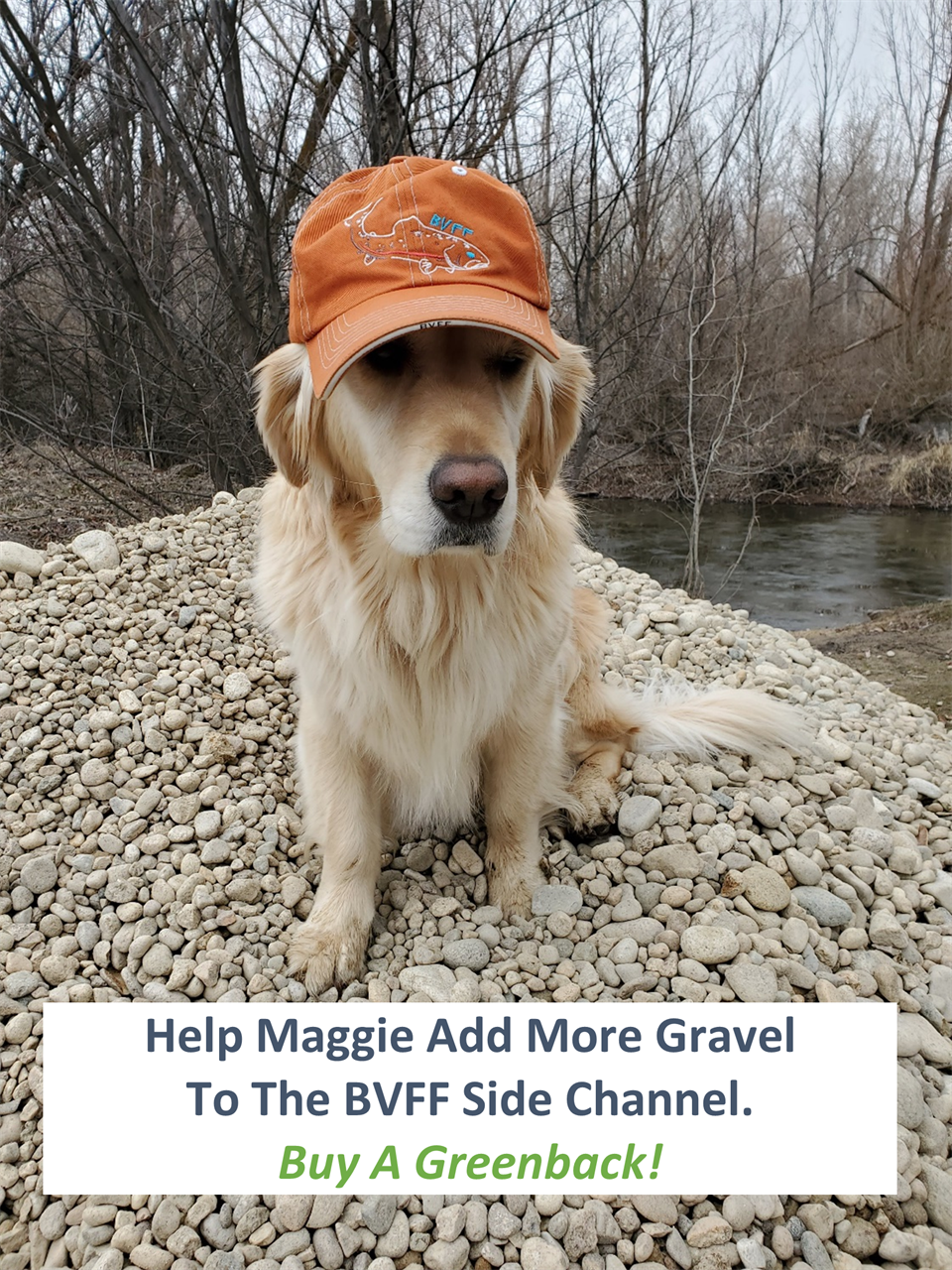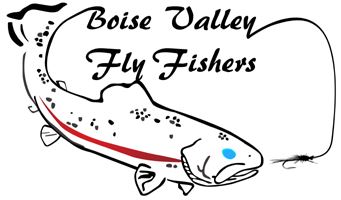GRAVEL MIGRATION OBSERVATIONS ON THE BOISE RIVER
In January of 2021, Boise Valley Fly Fishers added 12 Cubic Yards of gravel to a side channel of the Lower Boise River, on the south side around New Dry Creek Diversion. Based on Idaho Fish and Game’s (IDFG) recommendations we used a combination of 3/4” round rock, which ranged in size from ½” to 1” in size and 2” round drain rock, which ranged in size from 1.5” to 2”. The year before adding the gravel we observed very little spawning in the side channel, but the 2 years after adding the gravel we have seen a significant increase in brown and rainbow trout spawning and last fall, IDFG found a large number of trout fry in their shoreline fry survey. We are excited and encouraged by this success. We have observed the gravel is shifting downstream from high spring flows and we want to refresh it to help continue the spawning success. One question that both Idaho Fish and Game and the Army Corps of Engineers asked us about the gravel refresh was “Where did the gravel go that we put in last time”? A fair question that needed an answer.
We had taken measurements of gravel at the augmentation locations, and I was intimately familiar with the thousand foot side channel, having walked it with my dogs hundreds of times over the years. So, when the Boise River flows dropped to their lower winter levels I went on a gravel hunt, and here is what I found.
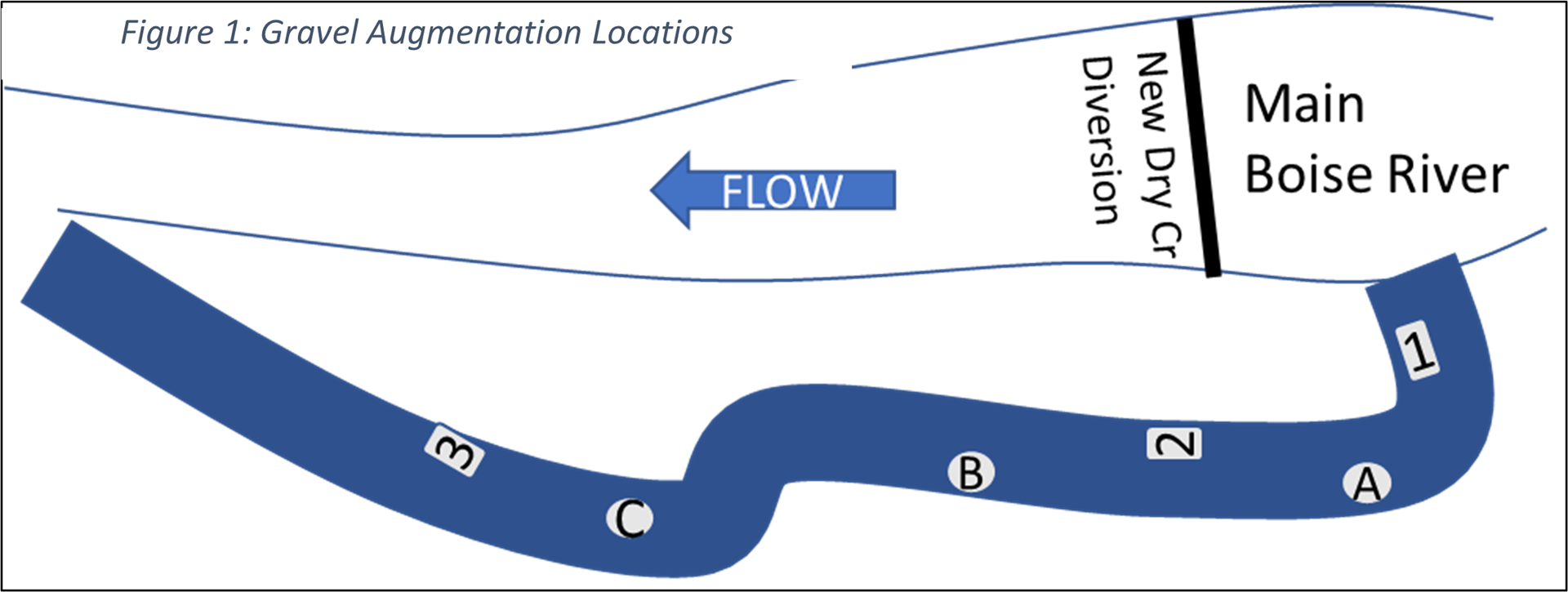
Figure-1 shows the locations where we placed gravel in the side channel. We made 3 rectangular beds, each approximately 8 feet wide x 20 feet long x 6” deep (shown as rectangles 1, 2 and 3 in Figure 1). One bed was near the top of the side channel, a second in the middle, and a third in the lower section of the side channel. We also ended up with some secondary gravel zones below where the piles of gravel were staged (shown as circles A, B & C).
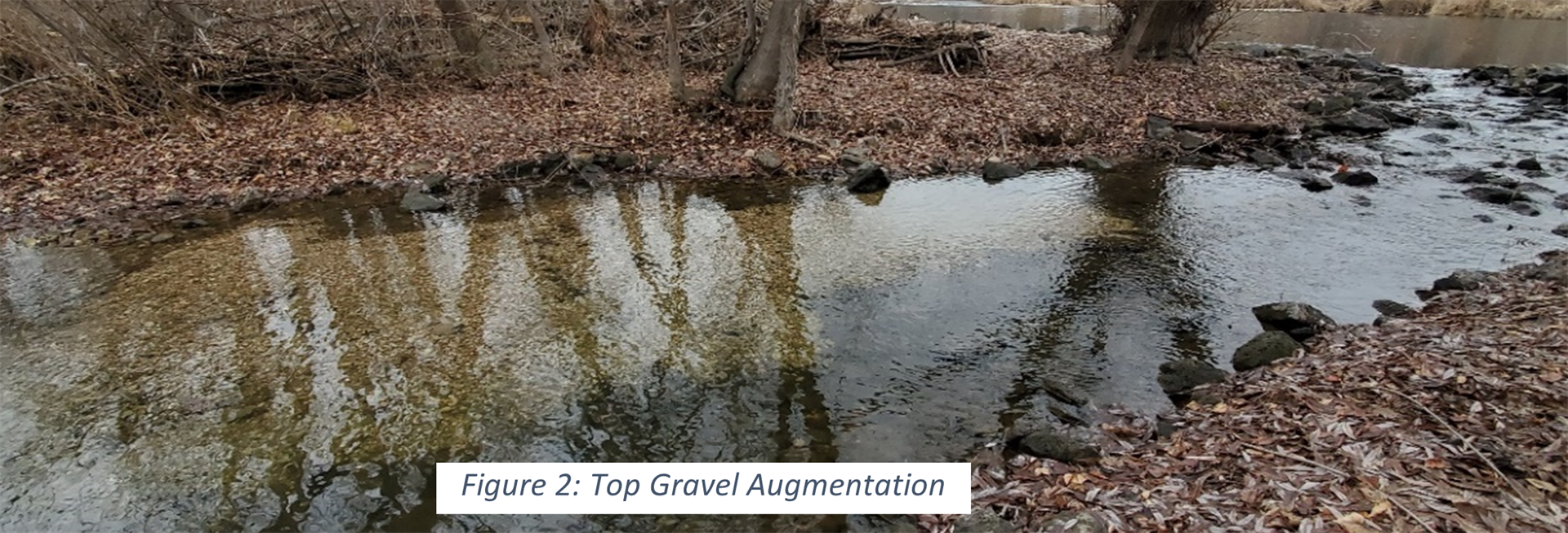
I walked the side channel from the top to the bottom, looking for smaller gravels and changes in the side channel. Inspecting the top locations (1 & A) I found no smaller gravels left from the augmentation. I think this is because these areas are in the direct path of incoming flows and higher spring flows moved the gravel downstream. But, although the gravels weren’t in their original location, I observed that some of it had shifted downstream and settled on the inside bend directly below, which I observed rainbows using to spawn the previous spring.
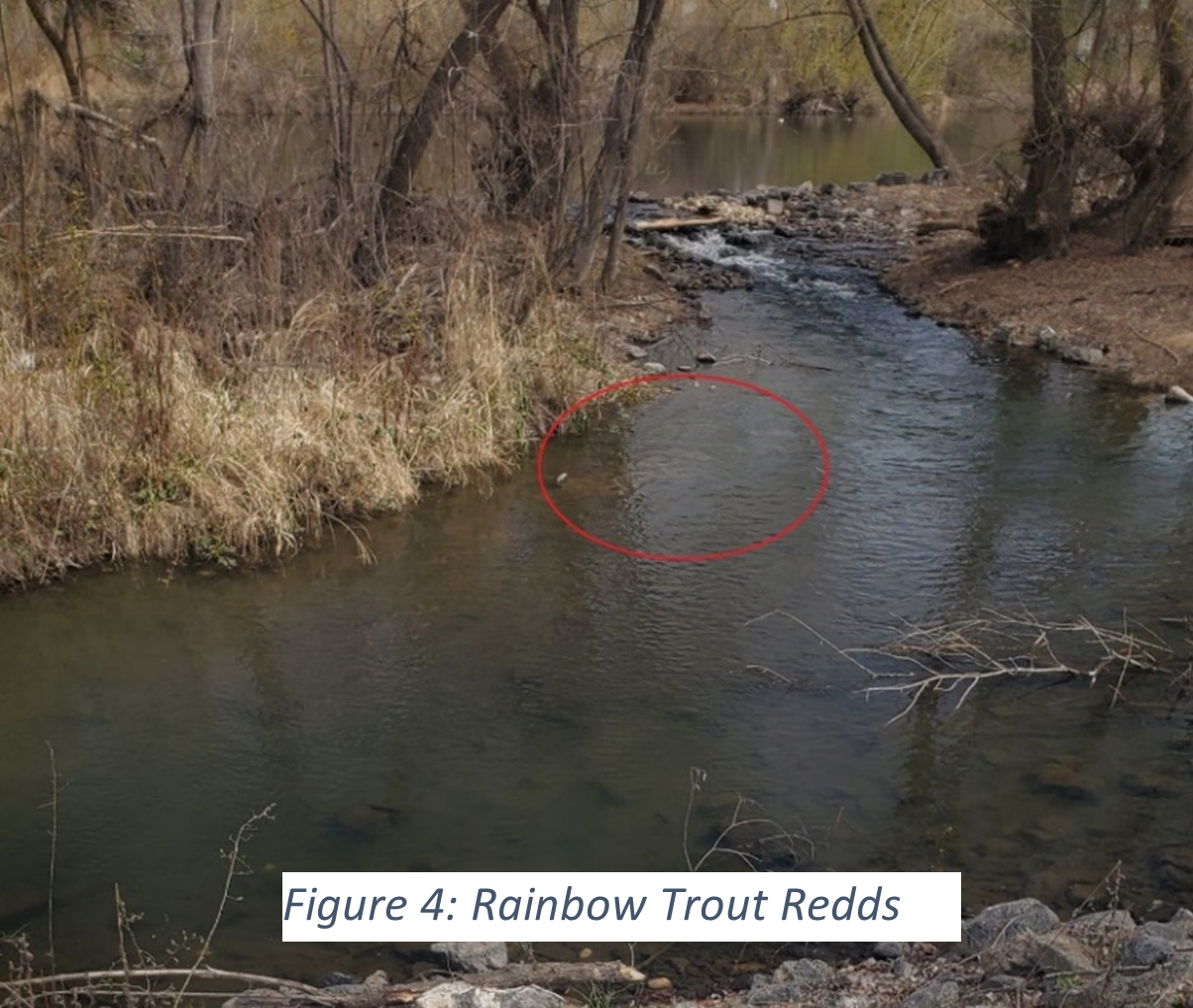
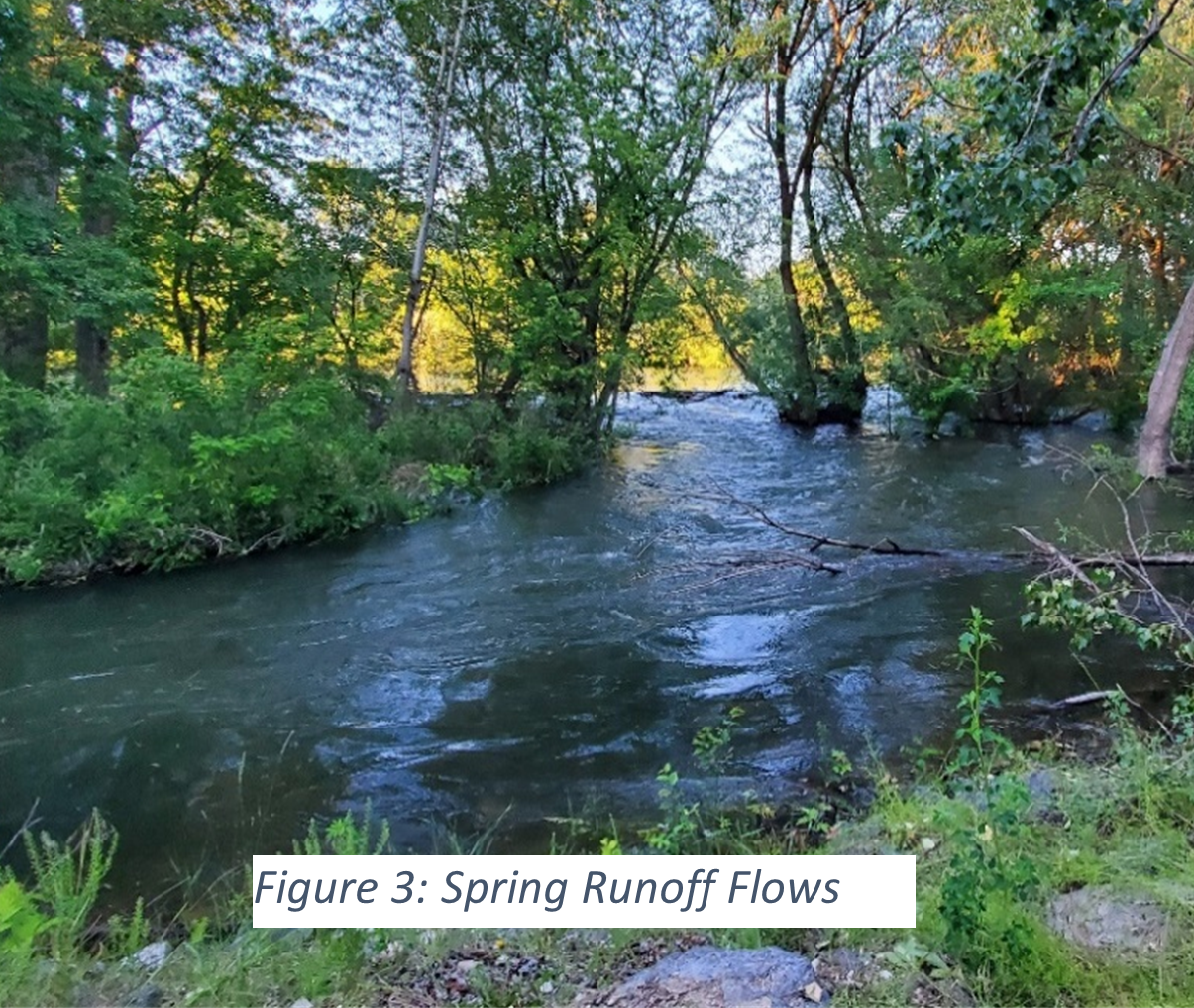
Walking down to the middle location (2) I could see that gravel was also gone—moved by higher flows. But I didn’t have to go far to find it as Mother Nature carried it about 100 feet downstream and created a new little riffle area that brown trout used to spawn last Fall. Well done, Mother Nature!
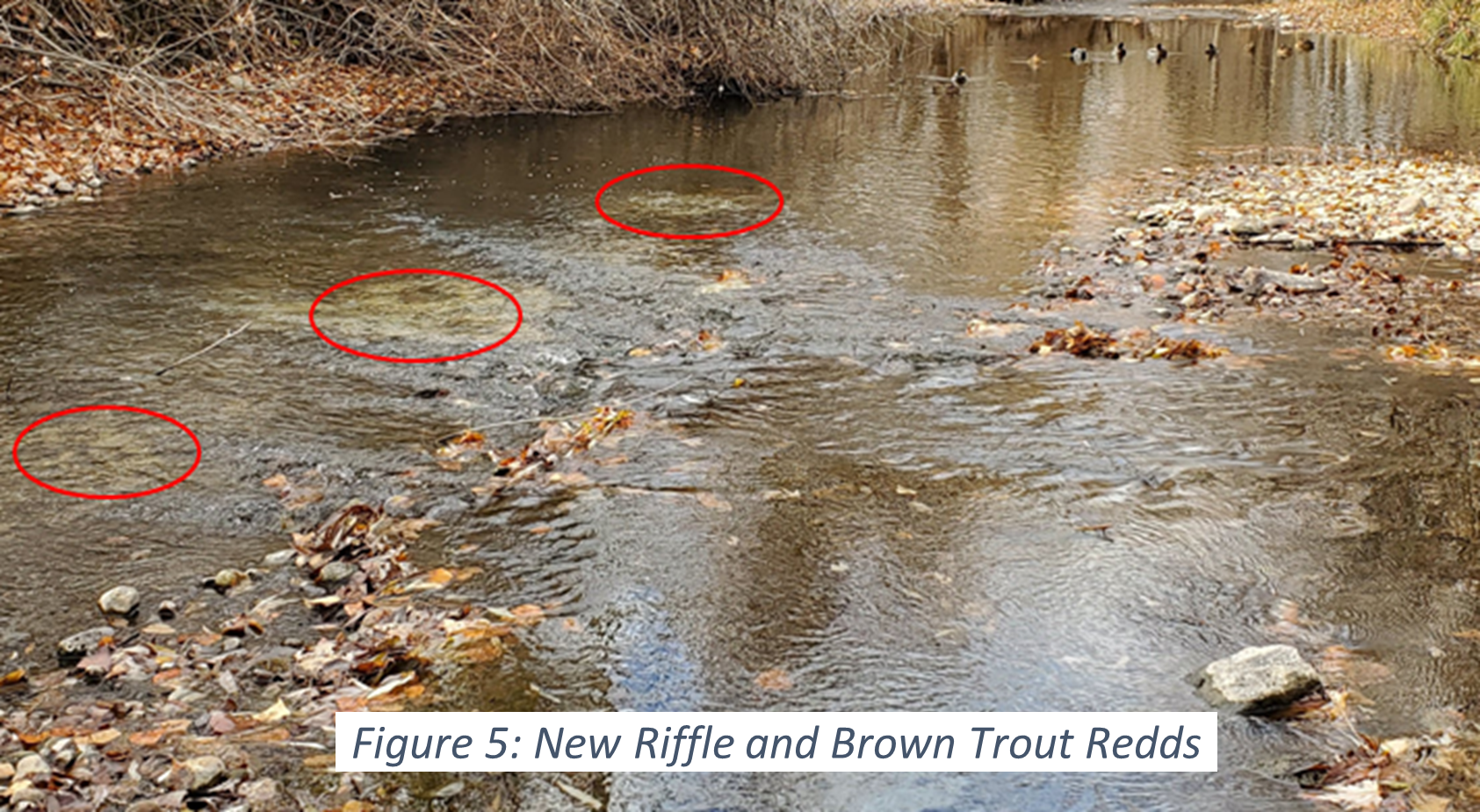
Continuing my inspection down the side channel I found another new riffle about 50 feet below the secondary “Zone B”, and a pile of smaller gravels that had accumulated on the next inside bend. This gravel accumulation is out of the water now but it will be underwater come spring and looks to be in a prime location for Rainbow Trout spawning. Similarly, I found that all the gravel that we had painstakingly wheelbarrowed into “Zone C” was gone and deposited onto an existing cobble bar below. We will have to watch these two new gravel accumulations this spring to see if rainbow trout use them to spawn.
Just below this little cobble bar is the third augmentation zone. I had to be careful here because it has quite a few brown trout redds, but from what I could see all of the gravel in this zone appears to still be in place with possibly some minor shifting. This location is protected from higher flows by the cobble bar above and is a lower gradient area that brown trout have used to spawn the last two years.
In summary, the gravels BVFF placed in the side channel are all still in the side channel, but spring flows are slowly working them downstream. The river is good at transporting and sorting gravel, depending on gravel size and river velocity, and the locations that the river chooses are ultimately the best spots for trout spawning. We are working to refresh the gravel at the top of the side channel, which will add gravel in the zone where rainbow trout like to spawn as well as give the river more building materials to continue to shape the side channel below. We are raising money for this gravel augmentation. It takes about $25 worth of gravel to make one trout redd, and each trout redd will support 2,000 or more eggs. The more redds we get in the river, the more wild-trout we will have! If you are interested in helping us, please donate by purchasing a “Greenback” from the BVFF Store.
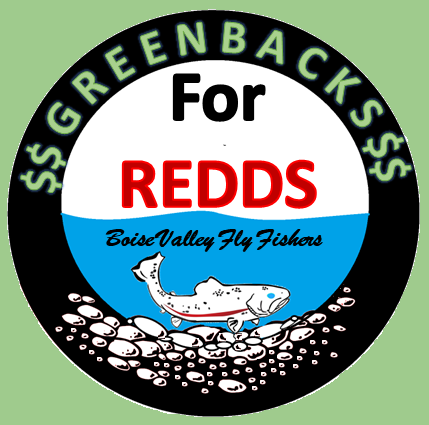
On a related side-note, while doing our brown trout redd mapping this fall we started at Heron Park in Garden City to take a look at the area where Trout Unlimited did a gravel augmentation in 2019. The gravels added along the left bank of the main Boise River have since been carried away by high spring flows and we did not see any brown trout redds until about a half a mile below. This reinforces the value of adding gravel into side channels where the reduced velocities help retain them longer than in the main river.
